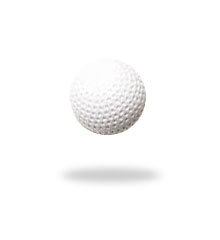
Main rules of the game:
The game is played between two teams consisting of 11 field players and five substitutes. Substitutions are permitted at any time with the exception of the period during which a penalty corner is awarded and taken. Within this period it is allowed to replace only an injured or suspended goalkeeper. A match consists of two 35-minute halves and a ten-minute break. The aim of the game is to hit the ball into the opposition's goal. The goal is 2.14 m high and 3.66 m wide, so it is a little larger than the goal in handball (3.6 x 2.13 m).
The field is a 91.40x55.00 m rectangle. The lines marked on the field include end lines, side lines and goal lines as well as semi-circles surrounding the goals on both ends of the field opposite the centre of the back lines. Additionally, the 23 m lines are marked across the field 22.90 m away from the back lines.
When the ball crosses the back line and a goal has not been scored:
- if it has been played by an attacker, the game is restarted from the area up to 15 m away from the back line and opposite the point where the ball has crossed the back line;
- if it has been played unintentionally by a defender or deflected by a goalkeeper, the game is restarted on the mark five metres away from the corner closer to where the ball has crossed the back line;
- if it has been intentionally played by a defender, the game is restarted with a penalty corner.
In order to make scoring goals more difficult, a special rule has been introduced. It states that a goal can only be scored by hitting or pushing the ball from within the penalty area (in hockey it is called the striking circle). The striking circle has a radius of 14 m. Players are allowed to touch the ball only with the flat part or the edge of the stick. It is not permitted to touch the ball with any part of the body. Only a goalkeeper may stop the ball with his stick, hands, legs or any other parts of the body. Players must not raise their sticks above the heads of other players. It is not allowed to touch or take hold of other players, their sticks and their clothes. Goalkeepers cannot take part in the game outside their half of the field.
If a player commits an offence between the 23-metres areas, the opposition is awarded a free hit. A penalty corner (the ball is placed on the back line inside the circle at least 10 m from the goal post) is awarded for an offence by a defender in the circle which does not prevent the probable scoring of a goal. A penalty stroke is awarded for an offence by a defender in his team's striking circle which prevents a probable goal, for a deliberate foul by a defender inside his circle and for persistent crossing of the back line by defenders when taking a penalty corner. Personal penalties for players include a verbal caution, a green card, a yellow card and a suspension for five minutes as well as a red card resulting in permanent exclusion from the game.
Indoor field hockey is a version of field hockey played on a handball court sized field surrounded by ten-centimetre boards. The teams in the indoor variant of hockey consist of six players.
Equipment:
The goal is 2.14 m high and 3.66 m wide. The ball is hard and white (or an agreed colour). Hockey is played with a rounded stick made of wood with a diameter of approximately 2.3 cm and a weight of approximately 160 g. The stick comprises the handle and the curved head which is flat on the left hand side. The stick must have a smooth surface without any rough or sharp parts. Along with any additional coverings, the stick must be able to pass through a ring with a diameter of 51 mm.
The players of the same team must wear uniform clothes. It is forbidden to wear anything which might be dangerous to other players. Field players may wear protective gloves, but only if they do not increase the size of their hands. It is recommended to wear shin, ankle and mouth protection. Over the chest protectors goalkeepers must wear shirts a different colour from both teams' clothing. Goalkeepers must wear headgear which can only be removed when taking a penalty stroke. Goalkeepers are recommended to wear a helmet ensuring complete face and throat protection as well as covering the entire head. In addition to leg guards and kickers, goalkeepers should also wear protective pads on their upper arms, elbows, forearms, hands and thighs. It is not permitted to wear clothing or protective equipment significantly increasing the natural size of the goalkeeper's body or the protected area.
